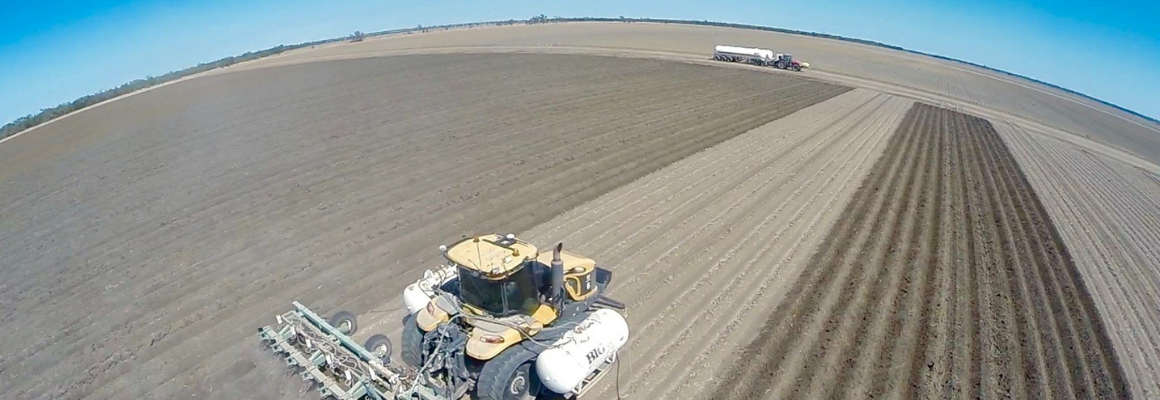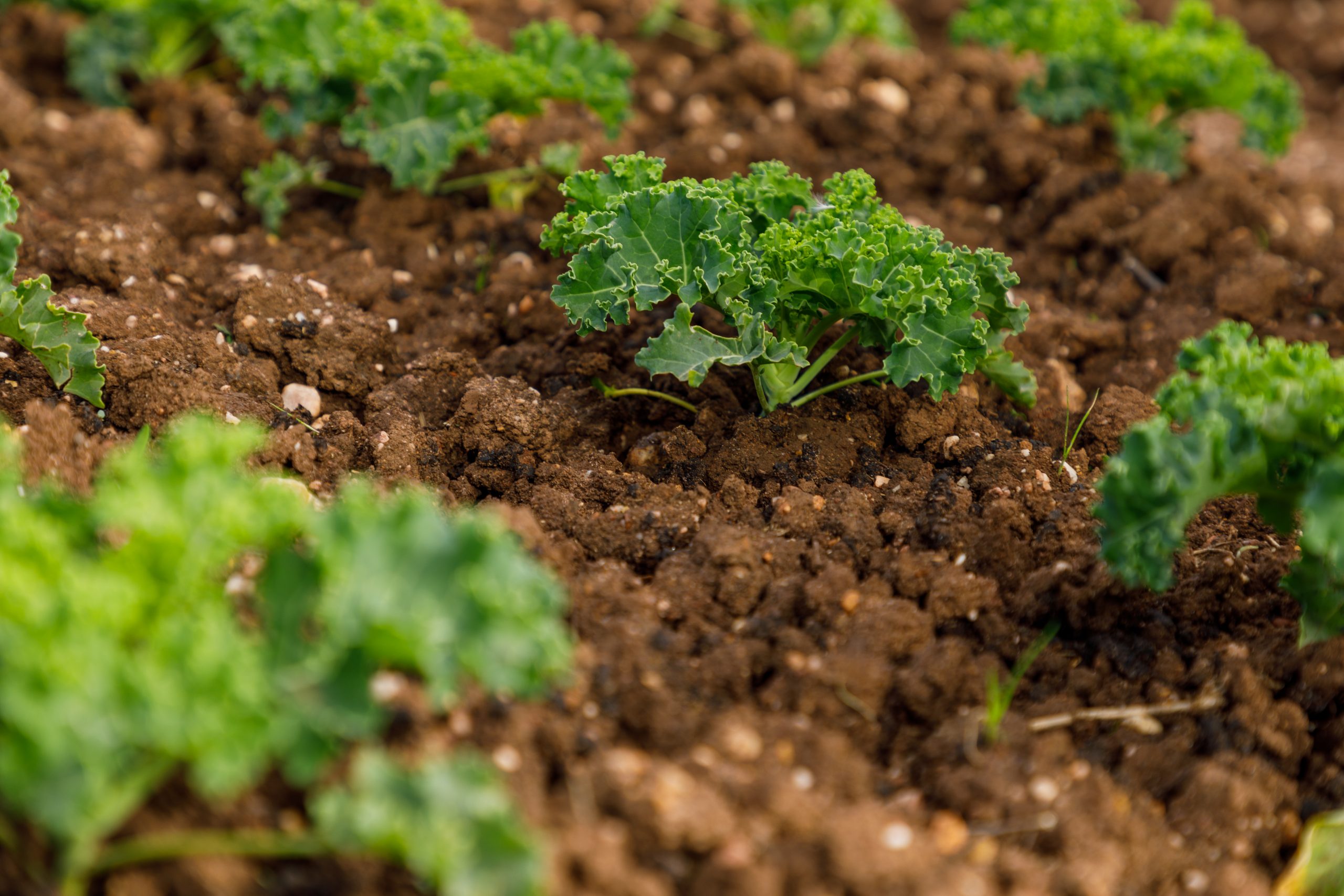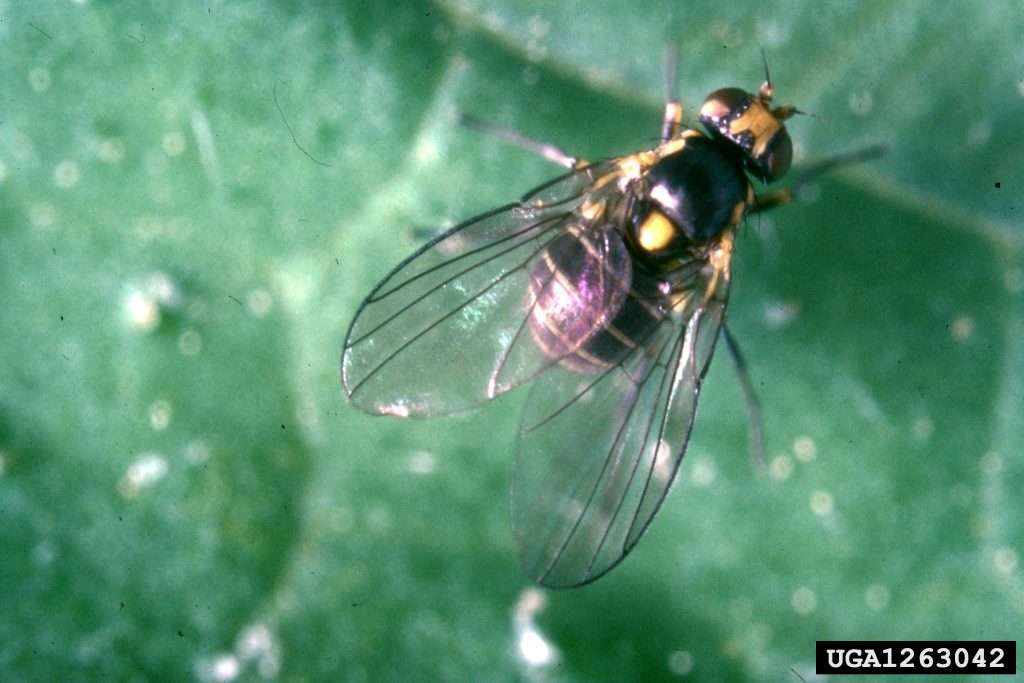
Focus on nitrogen stabilisers in the soil
24 November 2020
Extension project supporting South Australia’s veg growers
1 December 2020Fall armyworm
What is fall armyworm?
Fall armyworm (FAW) is the larval (caterpillar) stage of the moth species Spodoptera frugiperda (Lepidoptera, Noctuidae). Native to the tropical and subtropical Americas, it is responsible for widespread crop damage leading to large economic losses.
Where did FAW come from?
In 2016 FAW was first detected outside its native geographical range in Africa where it rapidly spread and by 2017 was established in most Sub-Saharan parts of the continent. In 2018 it had spread to India followed by China and South-East Asia.
When was FAW detected in Australia?
In January 2020 FAW was detected on the Torres Strait Islands of Erub and Saibai. Australian first mainland detection at Bamaga near the tip of Cape York in northern Queensland was confirmed in February 2020. It was then found across Queensland, at Katherine in the Northern Territory and Kununurra, Broome and Carnarvon in Western Australia.
The most recent detections (at time of publication) were near Moree in New South Wales on 23 September, followed by subsequent detections in Narrabri, Wee Waa, Dubbo, Breeza and Maitland in October 2020, where S. frugiperda moths were located in multiple traps. FAW moths were also found in Gingin, WA on 12 November 2020. The National Consultative Committee on Emergency Plant Pests have determined that eradication is not technically feasible. Fall armyworm is now considered established in the northern parts of Australia.
Host crops
Although fall armyworm has a feeding preference for Poaceae (grass family) it is considered polyphagous (generalist) and has been observed feeding on multiple plant families including but not limited to Asteraceae, Fabaceae, Brassiceae, Liliaceae, Solanaceae, Cucurbitaceae and over 350 species including sugarcane, maize, sorghum, Rhodes grass, onion, cauliflower, sweetcorn, capsicum, chickpea, cucumber, lettuce and citrus.
Control methods
Minor Use permits can be found on the Hort Innovation website here.
Fall armyworm webinar series
For more information
https://staging.ausveg.com.au/app/uploads/2020/05/FAW-Fact-Sheet_April-2020-1.pdf
Serpentine leafminer
Click here to view the management plan
Current situation
There have been confirmed detections of serpentine leafminer (also known as Pea leafminer) Liriomyza huidobrensis on field grown vegetables in Western Sydney in New South Wales and Kalbar in the Fassifern Valley region of Queensland.
Serpentine leafminer is an exotic leafminer species that poses a significant economic threat to Australia’s horticulture and nursery production plant industries. It has a wide host range of plant species which includes broccoli, beet, spinach, peas, beans, potatoes and cut flowers.
The pest is wind borne and eggs, larvae and pupae can be spread through the movement of plant material, soil, clothing and equipment.
Serpentine leafminer damage is primarily caused by larvae feeding under the surface of leaves. Typically, this feeding causes long, narrow, serpentine-shaped ‘mines’ which appear as white or grey lines on leaves with dampened black and dried brown areas.
On 22 October 2020 a grower in Western Sydney phoned the Exotic Plant Pest Hotline and reported the presence of suspected exotic leafminer on his property. When the property was inspected on 23 October several vegetable hosts were infested, with the infestation having spread across the property. Live and dead specimens were collected and submitted for diagnostic testing.
On 29 October the specimens were identified as serpentine leafminer. This identification was confirmed on 2 November. Secondary testing by the Department of Agriculture, Water and the Environment confirmed this.
The NSW Department of Primary Industries is establishing an Incident Management Team and Local Control Centre to coordinate the response. Infested sites are being assessed to inform further actions which may include treating host plants with pesticides and removal and destruction of severely infested host plants.
The Consultative Committee on Emergency Plant Pests met on 6 and 23 November 2020 to discuss the incident. The committee agreed to recommend that the serpentine leafminer is an emergency plant pest.
The Consultative Committee on Emergency Plant Pests met on 23 November 2020 to discuss the incident. The committee agreed to recommend to the National Management Group that the serpentine leafminer is an Emergency Plant Pest as defined by the Emergency Plant Pest Response Deed.
However, due to the locations of the incident, the current spread of the pest, the pest’s biology that includes a diverse host range the committee agreed to recommend that it is not technically feasible to eradicate.
A technical workshop with research and development experts will be held to further explore control options and identify knowledge gaps. Plant pest specialists will consider how to assist industry to manage serpentine leafminer and minimise the pest’s impact.
There have been no previous detections of serpentine leafminer in Australia.
Damage
Serpentine leafminer damage is primarily caused by larvae feeding under the surface of leaves. Typically, this feeding causes long, narrow, serpentine-shaped ‘mines’ which appear as white or grey lines on leaves with dampened black and dried brown areas.
High levels of infestation affect the plant’s ability to photosynthesise, reducing plant growth and crop yields.
Public advice and reporting
Production nurseries and growers should always check their crops regularly for signs of plant pests and disease. If you suspect a serpentine leafminer infestation, report it to the department of primary industries or agriculture in your state or territory. You can do this by phoning the Exotic Plant Pest Hotline on 1800 084 881.
Good on-farm biosecurity practices are vital to preventing incursions of plant pests and diseases. The farmbiosecurity.com.au website has helpful information that can be tailored to your property.
Have you seen an exotic leafminer webinar
Host crops
It has a wide host range of plant species which includes broccoli, beet, spinach, peas, beans, potatoes and cut flowers.
Control methods
Serpentine leafminers are most damaging when beneficial parasitoids are removed due to the use of non-selective insecticides (Cesar Australia 2018; Murphy and LaSalle 1999). For the ongoing management of leafminers it is important that chemicals are selected that are reasonably selective and have low toxicity towards key beneficial parasitoids.
Minor Use Permits as at 24/11/2020
| Permit ID | Description | Dates | Permit Holder | Jurisdiction | Permit Download |
| PER81867
Version 2 |
Cyromazine (Diptex 150 WP Insect Growth Regulator) / Various Vegetables / Liriomyza species, including: Vegetable Leafminer
(Liriomyza sativa), Serpentine Leafminer (Liriomyza huidobrensis)
|
2 December 2019 – 30 November 2023 | Hort Innovation | All states and territories | PER81867 |
| PER87878 | Spinetoram (Success Neo/Delegate) / Snow Peas & Sugar snap peas / Liriomyza Leafminers |
11-Feb-2020 to 28-Feb-2020 | Hort Innovation | All states and territories except Victoria | PER87878 |
| PER88640 | Spirotetramat (Movento 240 SC) / Snow Peas, Sugar Snap Peas, Lettuce (Head lettuce and Leafy lettuce), Parsley, Green Beans, Celery, Rhubarb, Eggplant, Capsicums, Chilies & Tomatoes /
Liriomyza leafminers (Liriomyza spp.) (including Vegetable leafminers, Pea leafminer and American serpentine leafminer)] Suppression only |
18-May-20 to 31-May-23 | Hort Innovation | All states and territories except Victoria | PER88640 |
| PER87878 | Spinetoram (Success Neo/Delegate) / Snow Peas & Sugar snap peas / Liriomyza Leafminers |
11-Feb-2020 to 28-Feb-2020 | Hort Innovation | All states and territories except Victoria | PER87878 |
| PER87631
Version 2 |
Chlorantraniliprole / Spinach & Silverbeet / Leafminers (Liriomyza spp.) including:
Cabbage leaf miner (Liriomyza brassicae), Vegetable leaf miner (Liriomyza sativae) & Serpentine leaf miner (Liriomyza huidobrensis) (suppression only) |
19-Jun-2019 to 30-Jun-24 | Hort Innovation | All states and territories | PER87631 |
For more information
Management plan: https://staging.ausveg.com.au/app/uploads/2020/07/1303CR2_Management-guide_FINAL_150620.pdf
Exotic leafminers webinar series: https://www.youtube.com/playlist?list=PL4cJZzAUfvKB03Pvihu6E-P5mR3sS4dXy
Serpentine leafminer factsheet: https://staging.ausveg.com.au/app/uploads/2020/12/SLM-Factsheet_V1.pdf
https://www.dpi.nsw.gov.au/biosecurity/plant/insect-pests-and-plant-diseases/exotic-leaf-miners

